Remembering Spring Cardigan |
|||||||||||||||||||
 |
 |
||||||||||||||||||
Knitted jacket in DROPS Alpaca and DROPS Kid-Silk. The piece is worked top down with double neck, raglan, lace pattern and ¾-length sleeves. Sizes S - XXXL.
DROPS 250-2 |
|||||||||||||||||||
|
------------------------------------------------------- EXPLANATIONS FOR THE PATTERN: ------------------------------------------------------- GARTER STITCH (worked back and forth): Knit all rows, from both the right and wrong side. 1 ridge in height = knit 2 rows. BANDS WITH I-CORD: START OF ROW: Work the band as follows: Slip 1 stitch purl-wise, with yarn in front, knit 1, work 4 garter stitches. END OF ROW: Work the band as follows: Work until there are 6 stitches left on the row, work 4 garter stitches, slip 1 stitch purl-wise with yarn in front, knit 1. Work like this from both the right and wrong side. PATTERN: See diagrams A.1 to A.3. The diagrams show all the rows in the pattern seen from the right side. RAGLAN: Increase 1 stitch by making 1 yarn over before/after each marker-stitch. On the next row, on the front and back pieces, purl the yarn overs from the wrong side/knit them from the right side – leaving holes. The yarn overs on the sleeves are purled twisted from the wrong side – no holes. Work the new stitches in stocking stitch on the front and back pieces and into the pattern on the sleeves. DECREASE TIP (for sleeves): Decrease 1 stitch on each side of the marker-thread as follows: Work until there are 3 stitches left before the marker-thread, knit 2 together, knit 2 (marker-thread sits between these 2 stitches), slip 1 stitch knit-wise, knit 1 and pass the slipped stitch over the knitted stitch (2 stitches decreased). BUTTONHOLES: Work the buttonholes from the right side and on the right band. ROW 1: Work until there are 4 stitches left on the row, make 1 yarn over, knit 2 together, work the last 2 band stitches as before. ROW 2: Knit the yarn over to leave a hole. The first buttonhole is worked on the first row after the neck, the other buttonholes when the piece measures: S: 9-18-27-36 cm M: 9½-19-28½-38 cm L: 10-20-30-40 cm XL: 8½-17-25½-34-42½ cm XXL: 9-18-27-36-45 cm XXXL: 9½-19-28½-38-47½ cm. ------------------------------------------------------- START THE PIECE HERE: ------------------------------------------------------- JACKET – SHORT OVERVIEW OF THE PIECE. The pattern uses both long and short needles; start with the length which fits the number of stitches and change when necessary. The double neck and yoke are worked back and forth with circular needle, from mid front and top down. When the yoke is finished, it is divided for body and sleeves and the body continued back and forth with circular needle, while the sleeves wait. The sleeves are worked in the round. The neck is folded to the inside and sewn down. If there is a «0» in your chosen size, skip the information and go straight to the next instruction. DOUBLE NECK: Cast on 104-108-114-118-122-126 stitches with circular needle size 4.5 mm, 1 strand DROPS Alpaca and 1 strand DROPS Kid-Silk (= 2 strands). Change to circular needle size 3.5 mm (casting on with a larger needle size gives and elastic cast-on edge). Work stocking stitch back and forth for 2½ cm – with the last row from the wrong side and casting on 6 stitches at the end of this row = 110-114-120-124-128-132 stitches. Then work as follows: ROW 1 (= right side): Work BAND WITH I-CORD – read description above, knit to end of row and cast on 6 stitches = 116-120-126-130-134-138 stitches. ROW 2 (= wrong side): Work BAND WITH I-CORD, purl until there are 6 stitches left, work BAND WITH I-CORD. The neck is later folded along this row. Continue with stocking stitch and bands with I-cord on each side until the neck measures 6 cm. It will be approx. 3 cm when folded double. Insert 1 marker after the band at the beginning of the round, the yoke is measured from here. YOKE: Continue with needle size 4.5 mm. ROW 1 (= right side): Work the band as before, knit 104-108-114-118-122-126, AT THE SAME TIME decrease 10-10-12-12-12-12 stitches evenly spaced, work the band as before. Remember the first BUTTONHOLE – read description above = 106-110-114-118-122-126 stitches. ROW 2 (= wrong side): Work the band as before, knit from the wrong side until there are 6 stitches left, work the band as before. Insert 4 markers without working the stitches (these are used when increasing for raglan) as follows. Count 19-20-21-22-23-24 stitches (= left front piece), insert 1 marker in the next stitch, count 19 stitches (= sleeve), insert 1 marker in the next stitch, count 26-28-30-32-34-36 stitches (= back piece), insert 1 marker in the next stitch, count 19 stitches (= sleeve), insert 1 marker in the next stitch, there are 19-20-21-22-23-24 stitches left after the last marker (= right front piece). On the next row work PATTERN and increase for RAGLAN – read description above, as follows: ROW 1 (= right side): Work the band as before, knit 13-14-15-16-17-18 (= left front piece), increase 1 stitch for raglan, 1 stocking stitch (first marker sits in this stitch), work A.1, A.2 over the next 12 stitches, work A.3, 1 stocking stitch (second marker sits in this stitch = sleeve), increase 1 stitch for raglan, work 26-28-30-32-34-36 stocking stitches, increase 1 stitch for raglan (= back piece), 1 stocking stitch (third marker sits in this stitch), work A.1, A.2 over the next 12 stitches, work A.3, 1 stocking stitch (fourth marker sits in this stitch = sleeve), increase 1 stitch for raglan, work 13-14-15-16-17-18 stocking stitches and band as before (= right front piece). REMEMBER THE KNITTING TENSION! Continue this pattern back and forth but note that the increases are different on the front/back pieces and the sleeves - read INCREASES FOR SLEEVES and INCREASES FOR FRONT/BACK PIECES before continuing! INCREASES FOR SLEEVES: On the sleeves you increase 17-20-21-23-24-25 times on each side (including the first increase described above). The sleeve increases are drawn into diagrams A.1 and A.3. Each time A.1, A.2 and A.3 are finished in height, there is room for 2 more repeats of A.2 between A.1 and A.3. The stitches which do not fit into the pattern on each side of the sleeve are worked in stocking stitch. INCREASES FOR FRONT/BACK PIECES: On the front and back pieces, you increase 22-24-26-29-33-36 times (including the first increase described above), as follows: Increase on each row 0-0-0-0-4-6 times, then every 2nd row 22-24-26-29-29-30 times. AFTER THE LAST INCREASE: When all the increases are finished there are 262-286-302-326-350-370 stitches (41-44-47-51-56-60 stitches on each front piece, 55-61-63-67-69-71 stitches on each sleeve (including the marker-stitches on each side of the sleeves) and 70-76-82-90-100-108 stitches on the back piece. Continue with pattern, stocking stitch and the bands but without further increases. The stitches which do not fit into the pattern on each side of the sleeve are worked in stocking stitch. Work until the yoke measures 19-23-24-26-27-28 cm from the marker. DIVIDE FOR BODY AND SLEEVES: Now divide for the body and sleeves as follows: Work 41-44-47-51-56-60 stitches as before (= front piece), place the next 55-61-63-67-69-71 stitches on a thread for the sleeve, cast on 10-10-12-12-14-16 stitches (in side under sleeve), work 70-76-82-90-100-108 stitches (= back piece), place the next 55-61-63-67-69-71 stitches on a thread for the sleeve, cast on 10-10-12-12-14-16 stitches (in side under sleeve), work the last 41-44-47-51-56-60 stitches as before (= front piece). The body and sleeves are finished separately. The piece is now measured from here! BODY: = 172-184-200-216-240-260 stitches. Continue with stocking stitch and the bands as before, back and forth until the body measures 20-18-19-18-19-20 cm from the division. On the next row from the right side, begin working rib. AT THE SAME TIME increase 1-5-5-9-9-13 stitches evenly on the first row = 173-189-205-225-249-273 stitches, as follows: Change to circular needle size 3.5 mm. Work the band as before, rib (knit 1, purl 1 – remember the increases) until there are 7 stitches left, knit 1 and work the band as before. When the rib measures 3-3-3-4-4-4 cm, cast off a little loosely with rib. The jacket measures approx. 47-49-51-53-55-57 cm from the shoulder. SLEEVES: Place the 55-61-63-67-69-71 stitches from the thread on the one side of the piece on circular needle size 4.5 mm and knit up 1 stitch in each of the 10-10-12-12-14-16 stitches cast on under the sleeve = 65-71-75-79-83-87 stitches. Insert a marker-thread in the middle of the 10-10-12-12-14-16 stitches under the sleeve. Start at the marker-thread and continue the pattern in the round. The stitches which do not fit into the pattern under the sleeve are worked in stocking stitch. AT THE SAME TIME when the sleeve measures 3-3-3-4-4-4 cm from the division, decrease 2 stitches under the sleeve – read DECREASE TIP. Decrease like this every 4-2½-2-1½-1½-1 cm a total of 6-8-9-10-11-12 times = 53-55-57-59-61-63 stitches. Continue working until the sleeve measures 30-27-26-23-23-22 cm from the division. Change to double pointed needles size 3.5 mm and work rib (knit 1, purl 1). AT THE SAME TIME on the first round increase 1-1-3-3-5-7 stitches evenly spaced = 54-56-60-62-66-70 stitches. When the rib measures 3-3-3-4-4-4 cm, cast off a little loosely with rib. The sleeve measures approx. 33-30-29-27-27-26 cm from the division. ASSEMBLY: Fold the neck double to the inside and sew down. To avoid the neck being tight and rolling outwards, it is important that the seam is elastic. Sew the buttons onto the left band. |
|||||||||||||||||||
Diagram explanations |
|||||||||||||||||||
|
|||||||||||||||||||

|
|||||||||||||||||||
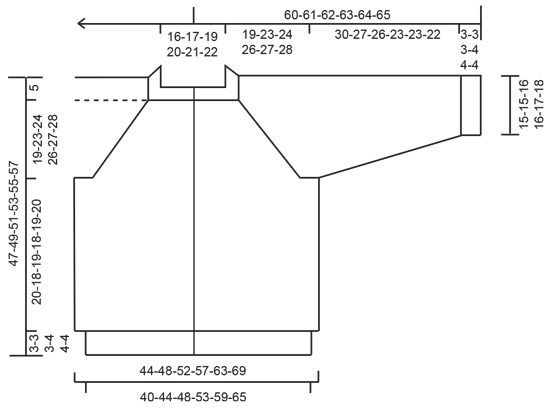
|
|||||||||||||||||||
|
Have you made this or any other of our designs? Tag your pictures in social media with #dropsdesign so we can see them! Do you need help with this pattern?You'll find tutorial videos, a Comments/Questions area and more by visiting the pattern on garnstudio.com. © 1982-2024 DROPS Design A/S. We reserve all rights. This document, including all its sub-sections, has copyrights. Read more about what you can do with our patterns at the bottom of each pattern on our site. |
|||||||||||||||||||








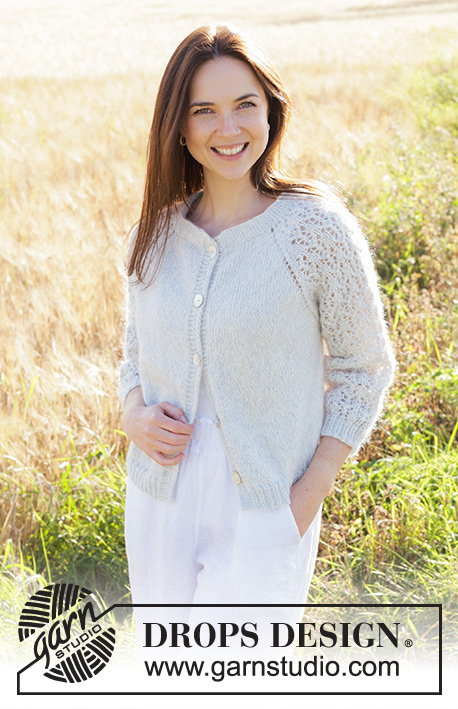


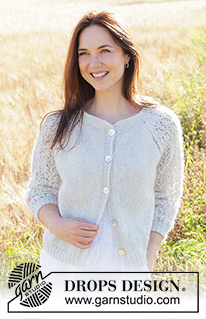
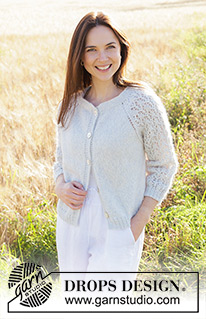













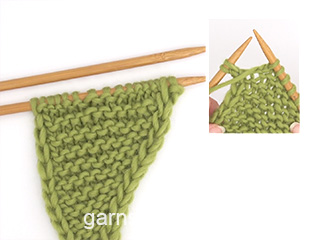









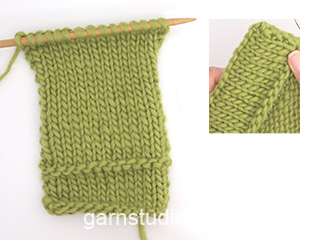









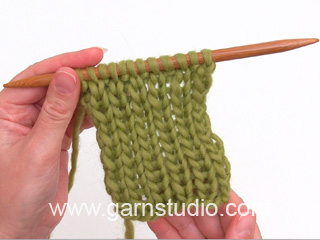




























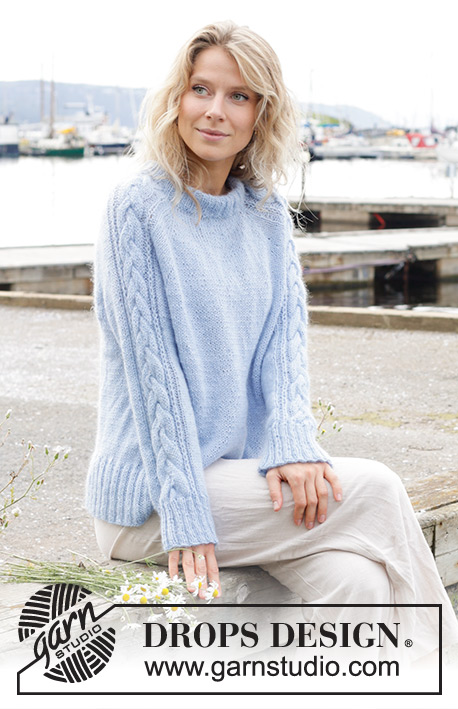
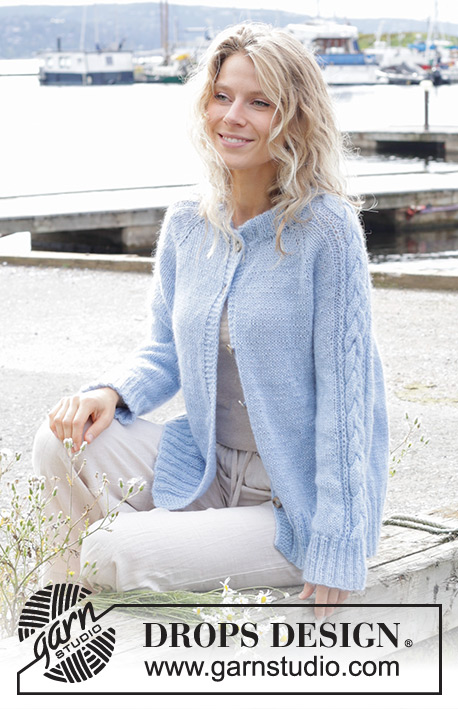






Comments / Questions (9)
Die unterschiedlichen Zunahmen an Ärmeln und Vorder-/Rückenteil sind für mich unklar beschrieben: Wie viel Male werden die Diagramme für die Passe in die Höhe gestrickt oder hört man mitten im Diagramm auf, wenn die Anzahl Zunahmen erreicht wurde? Werden die Raglanzunahmen nicht in jeder zweiten Reihe gestrickt, also immer auf der Vorderseite? Es ist mir nicht klar, wie das unterschiedlich sein kann, da die Ärmelzunahmen im Muster vorgegeben sind. Danke!
01.04.2024 - 19:30DROPS Design answered:
Liebe Karin, die Raglanzunahmen werden bei den Ärmeln und beim Rumfpteil an einem unterschiedlichen Rythmus gestrickt; für die Ärmel nehmen Sie wie in den Diagrammen zu; bei den Vorderteilen + Rückenteil nehmen Sie zuerst in jeder Reihe (nur in die 2 grösseren Grösse) dann in jeder 2. Reihe (in jeder Hin-Reihe). Bein den Diagramme wird es nicht in jeder 2. Reihe zugenommen, nur wie in A.1 + in A.3 gezeigt wird (siehe 2. Symbol). Viel Spaß beim Stricken!
02.04.2024 - 15:38Dear Drops Team, in the pattern description it says: S - M - L - XL - XXL – XXXL Finished measurements: Chest measurements: 80-88-96-106-118-130 cm = 31 1/2"-34 5/8"-37 3/4"-41 3/4"-46 1/2"-51 1/4" Full length: 47-49-51-53-55-57 cm = 18 1/2"-19 1/4"-20"-21"-21 5/8"-22 1/2 BUT the numbers on the chart provide different information, so I am confused which one is true.
26.02.2024 - 13:42DROPS Design answered:
Dear Isabella, the numbers in the US-English pattern gives the circumference of bust while the chart shows just the finished measurements when piece lays flat - full length is the same as stated in the written pattern. Read more about measurement charts here. Happy knitting!
26.02.2024 - 14:56Dear Team, I am confused with the measurements in this pattern, the size description in the text is different from the sizes shown in the diagram. Which one of the two is correct?
23.02.2024 - 18:13DROPS Design answered:
Dear lsabella, which measurements do you mean could be wrong? Can you tell us more so that we can check and explain/edit? Thanks for your help.
26.02.2024 - 07:16J'aime beaucoup ce modèle que j'aimerais réaliser avec un col qui ne soit pas double et des manches de longueur normale. Comment dois je procéder ?. En vous remerciant
13.02.2024 - 17:08DROPS Design answered:
Bonjour Sylvie, aidez-vous d'un modèle similaire de même tension pour tricoter le col (car ici, c'est un ourlet, pas des côtes et il vous faudra alors adapter le nombre de mailles en fonction des côtes souhaités et de la taille) et trouver également les ajustements nécessaires pour la longueur des manches souhaitée. Bon tricot!
14.02.2024 - 07:53Saltsjöbad!
20.01.2024 - 22:12Romance
19.01.2024 - 08:54Sailing Away
19.01.2024 - 06:51Romantisch, uit andere tijden
18.01.2024 - 22:20Perlehyasint
18.01.2024 - 15:36